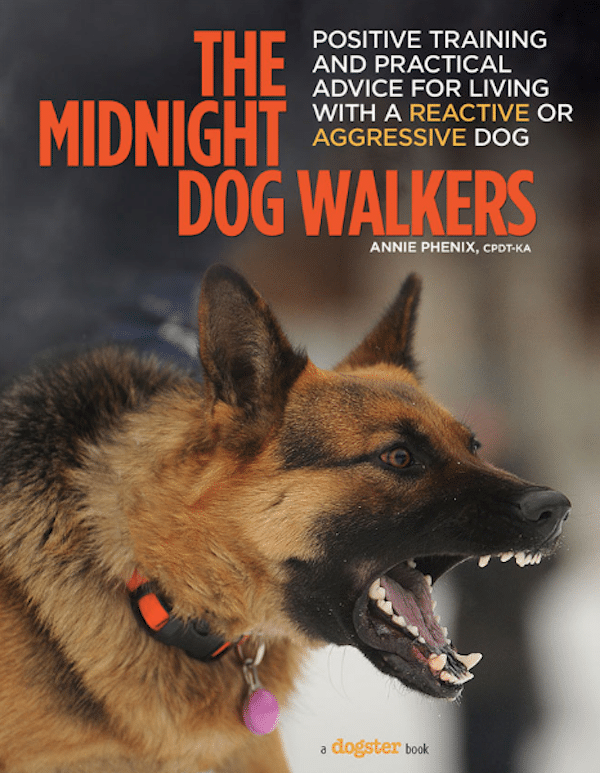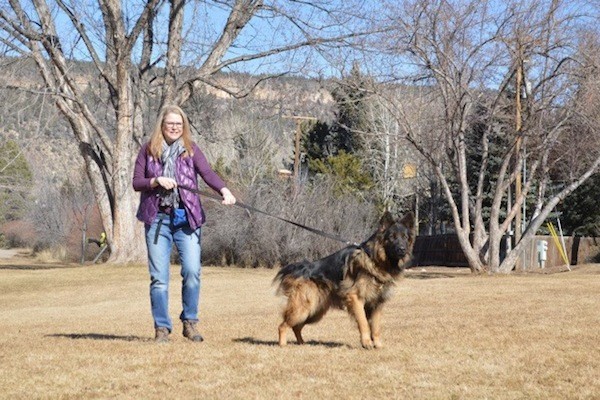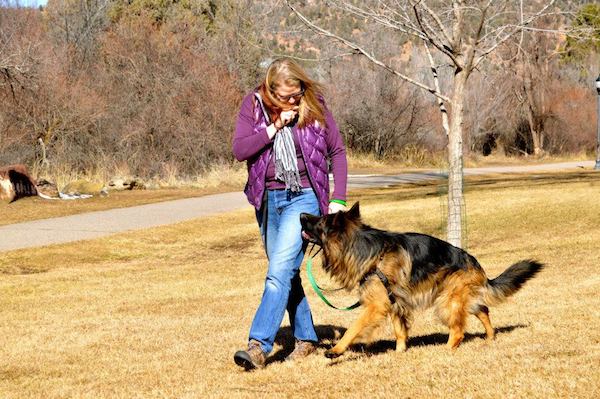My new book — The Midnight Dog Walkers: Positive Training and Practical Advice for Living With Reactive of Aggressive Dogs (Lumina Media) — has something in it for all types of pups, not just troubled dogs. I wrote this now bestseller for YOU — the dog owner. You CAN train your own dog, and the book tells you how to do just that. Here’s a excerpt from one of the chapters.

To be a great guide for your four-legged best friend, you need these five qualities:
1. Connectivity
Without a sense of connection, there is no way forward.
Owners can surely start to resent dogs who destroy their homes while they are at work, etc. It is exhausting to own a reactive dog and to live in constant fear of an outburst, or worse, a dog bite. We humans are an awful judgy lot, and people with leash-lunging dogs feel public scorn. If you do not feel a connection to the dog in your home, please let that be a red alert mental siren and get help for the dog — sooner rather than later.
Even if you end up re-homing the dog to one better suited for that particular dog, you are aiding that dog’s life by calling in experts. Help first comes from a check with a veterinarian to rule out any possible medical conditions contributing to behavioral concerns. Help next comes from a qualified trainer or behaviorist. And, help comes from within you if you have the next items on my list.
2. Empathy
Empathy is a learned skill.
Start looking at your dog from his point of view. Ask yourself: Did my dog have a fulfilling day? Was he calm most of the day or was he terrified? Did I provide sufficient mental and physical exercise for my dog today? Did I make headway in changing his underlying negative emotions into a positive association with a trigger? If the answer to these questions are “no,” do better tomorrow. You can!
An enormous change for the good for everyone occurs when you shift the dialogue in your head from “my dog is stubborn and should know better” to “how can I better teach or guide this dog into understanding what I am asking of him?” It puts the responsibility of teaching where it firmly belongs, and that is with us, the humans — the ones with the bigger brains.

3. Love
It’s okay to love your dog. It is love and affection that keeps owners seeking answers for their troubled dogs. Science itself has proven that when dogs and their owners gaze into each other’s eyes, both species show increases of oxytocin in their urine. Oxytocin is known as “the love hormone.”
The important Japanese study that looked at eye gazing and oxytocin levels also demonstrates that there is a positive feedback loop from dog to owner and back again. We look into their eyes and feel love (call it an oxytocin spike if you work in a lab), and they look in our eyes and feel the same. I can imagine this is the same type of feedback loop in play when owners give conditioned cues such as tightening on the leash when another dog is in the vicinity. Now imagine if you have hit, punched, kicked, or hung your dog. What do you think is released inside of his body when looks into your angry human eyes? It won’t be oxytocin.
4) Prevention
Do you know the old expression that an ounce of prevention is worth a pound of cure? It’s true about dogs as well.
What can you prevent? Many things, and with enough planning and pre-thought, you can ward off most bad things. We know that puppies must be positively and properly socialized by 12 to 16 weeks of age. Veterinarians need to accept this fact and stop advising puppy owners to keep puppies at home until all the rounds of puppy vaccines have been completed. We are ruining dogs by keeping them un-socialized as puppies during a critical learning stage.
On the other hand, use common sense! Don’t take an unvaccinated puppy to a place where there have been a lot of dogs, such as the dog park. Get two rounds of vaccines, and in between vet visits for those shots, socialize your dog to human life at home, at a neighbor’s with children and other dogs’ clean homes, at a well-kept dog training school, etc. Finally, socialization should not stop at that magical 14-week mark! Keep on going and showing new things to your dog because you are laying down a solid foundation for the rest of that dog’s life.
5. Understanding of canine body language
A great starting place is behaviorist Sarah Kalnajs’ terrific DVD The Language of Dogs. Another excellent tool is trainer Jill Breitner’s Dog Decoder phone app — it’s fun and easy to use for all ages. We are learning more every day about what dogs are trying to communicate with each other and with us. They understand us so well, and it is past time to share in the responsibility of a shared life and learn how a dog communicates.
Do you know what a self-calming signal looks like (could be a yawn or a lip licking)? Do you know what a cut-off signal used to interrupt behavior coming at them from another animal looks like (turning body away, growling)? Can a dog be wagging its tail and still bite (yes!)? What does a hard stare or stiffness from a dog mean (a serious warning – stop what you are doing)? What does fear look like in a dog? What does aggression look like? You need to know the difference. The life of your dog may very well depend on your knowing the difference.
About the author: Annie Phenix, CPDT-KA, is a force-free professional dog trainer enjoying her mountain-filled life in Colorado. She is a member of the Pet Professional Guild and the National Association of Canine Scent Work. She is Dogster’s Resident Trainer and the author of The Midnight Dog Walkers, a book about living with and training troubled dogs. Join Annie on her dog-training Facebook page.





